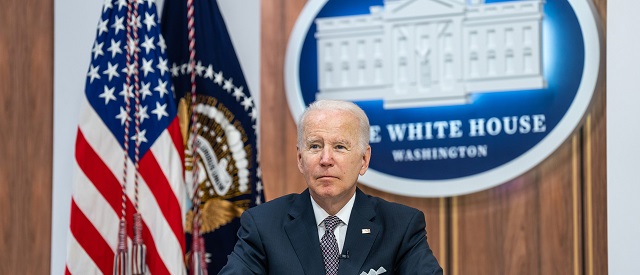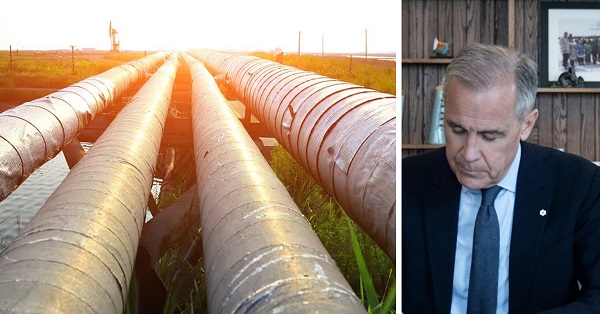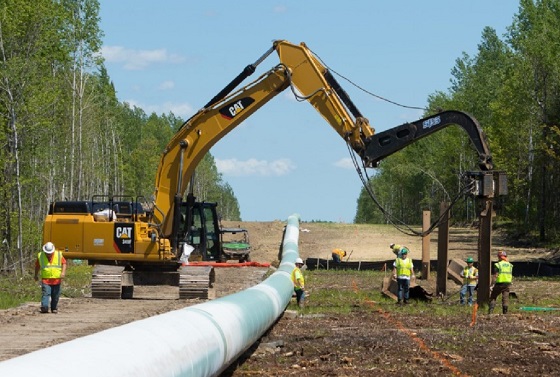Automotive
Biden’s Ambitious EV Charging ‘Fantasy’ May Be On A Collision Course With Reality

 From the Daily Caller News Foundation
From the Daily Caller News Foundation
By NICK POPE
President Joe Biden has pledged to install 500,000 public electric vehicle (EV) chargers around the U.S. by 2030, but logistical hurdles may be too much to overcome.
The Biden administration landed $7.5 billion to build out a network of public EV charging stations around the country in the bipartisan infrastructure package of 2021, but those funds have only led to a handful of operational charging stations to date. Transportation Secretary Pete Buttigieg reaffirmed the administration’s goal to build 500,000 chargers with the money by 2030 during a May television appearance on CBS News, but challenges like adding transmission lines, navigating the permitting process and coordinating with utility companies figure to make the goal improbable.
As of April 1, the administration’s $7.5 billion push had only led to seven operational charging stations combining for less than 40 chargers around the U.S., a pace that has drawn criticism from House Republicans and even Democratic Oregon Sen. Jeff Merkley. While other projects are on their way to being built and operational, the nation’s EV charging infrastructure remains mostly concentrated in more densely-populated, coastal areas of the country, according to the Department of Energy (DOE).
Dem Senator Rips Biden Official Over Sluggish Rollout Of Key EV Program pic.twitter.com/Ldj1dhJ8Jo
— Daily Caller (@DailyCaller) June 5, 2024
While results have been slow to materialize, federal funding should be sufficient to build approximately 25,000 charging spots at about 5,000 stations, according to Atlas Public Policy, a policy analysis organization that focuses specifically on EVs. In order to reach those figures by 2030, the administration’s funding will have to spur the construction of more than 900 stations each year until then, a big step up from the program’s output of less than 10 stations over nearly three years.
“Our programs are accelerating private sector investment that puts us on track to deploy 500,000 charging ports well ahead of schedule and continue to expand a convenient and reliable charging network,” a Department of Transportation spokesperson told the DCNF. “There are currently projects underway in partnership with states and local grantees for 14,000 federally-funded EV charging ports across the country under the [National Electric Vehicle Infrastructure (NEVI)] and [Charging and Fueling Infrastructure (CFI)] programs that will build on the 184,000 chargers operational today.”
Of the 184,000 chargers in operation today, more than 107,000 were already in circulation as of 2020, the last full year before the Biden administration took office, according to the DOE. Moreover, there are only about 10,000 fast charger stations in the U.S., a number that EV proponents would like to see increase to alleviate the public’s concerns about EV range and recharging wait times, according to The Washington Post.
Some of the biggest logistical hurdles are ones that may not be immediately obvious, such as enduring the process of building out needed transmission lines and upgrading existing utility infrastructure to accommodate hundreds of thousands of new chargers, according to experts who spoke with the Daily Caller News Foundation about whether such a number of chargers will be operational by 2030.
One skeptical expert is Dr. Jonathan Lesser, a senior fellow at the National Center for Energy Analytics and president of Continental Economics. Lesser estimates that “hundreds of thousands of miles” of new transmission lines will be needed to deliver enough electricity to the right places to meet the administration’s goal, a tall order given that the U.S. managed to complete less than 700 miles of transmission projects in 2022, according to data aggregated by Statista.
Lesser wrote his own analysis of the challenges the administration’s EV charger push faces for The Hill on Monday.
“The administration’s efforts to mandate EVs without considering the physical infrastructure to charge them (to say nothing of the cost), not only highway charging stations but also the necessary upgrades to millions of miles of local distribution circuits and transformers for home charging – is either an exercise in green virtue signaling or a cynical effort to restrict Americans’ mobility,” Lesser told the DCNF. “If EVs are the wave of the future then consumers will purchase them without the need for mandates and the private sector will develop the necessary infrastructure, just as it did a century ago and just as Tesla has done for its vehicles, without the need for government intervention.”
'Fundamentally Wrong': Virginia Heads For Exit Ramp After Adopting California's 'Out-Of-Touch' EV Rules https://t.co/oOKcH9Dha1
— Daily Caller (@DailyCaller) June 5, 2024
“If all those chargers were in place, you would need hundreds of thousands of large transformers and transmission lines along highways to provide the electricity,” Lesser continued. “You would also need linemen to install everything – and they are already in short supply. Of course, none of this addresses the issue of where the electricity comes from – if it is to be from renewables (e.g., wind and solar), there would have to be a massive building effort.”
Lesser believes there is “not a chance” that the 500,000 charger goal is met by 2030, and added that Buttigieg’s suggestion the administration will reach that target amounts to “pure fantasy.”
In addition to the billions of dollars meant to subsidize public charging infrastructure, the administration is also spending big to help manufacturers produce more EVs and to blunt the higher costs of EVs for consumers. Further, federal agencies have also promulgated aggressive fuel economy standards and tailpipe emissions rules that will force significant increases in EV sales over the next decade for light-, medium- and heavy-duty models.
Energy Secretary Jennifer Granholm described the chargers covered by the $7.5 billion program as “the hardest ones because they’re going to places where the private sector hasn’t gone because there’s no electricity, because they’re remote” at Politico’s 2024 Energy Summit remarks on Wednesday.
Aidan Mackenzie — an infrastructure fellow at the Institute for Progress with particular expertise covering energy, transportation and housing policy — agreed that logistical challenges are likely to hinder the administration’s goal for charger deployment by 2030. Specifically, he highlighted securing complementary infrastructure, like transmission lines, as likely to sap time and resources away from the effort to construct a national network of public chargers.
“It seems like it’s going to be hard to meet this target,” Mackenzie told the DCNF. “Different utility regions do not necessarily have an incentive to plan or build large capacity transmission lines that share power. They often interrupt the way that utilities want to control the generation in their region. So, I would very much expect that to be the binding constraint.”
However, Mackenzie added that the administration could achieve the desired results of its $7.5 billion program and its broader goal of 500,000 charger goal if regulators and builders are able to develop “muscle memory” in the earlier stages of rollout so that officials from both sectors can more easily and quickly navigate complex processes in the near future.
Automotive
The high price of green virtue

By Jerome Gessaroli for Inside Policy
Reducing transportation emissions is a worthy goal, but policy must be guided by evidence, not ideology.
In the next few years, the average new vehicle in British Columbia could reach $80,000, not because of inflation, but largely because of provincial and federal climate policy. By forcing zero-emission-vehicle (ZEV) targets faster than the market can afford, both governments risk turning climate ambition into an affordability crisis.
EVs are part of the solution, but mandates that outpace market acceptance risk creating real-world challenges, ranging from cold-weather travel to sparse rural charging to the cost and inconvenience for drivers without home charging. As Victoria and Ottawa review their ZEV policies, the goal is to match ambition with evidence.
Introduced in 2019, BC’s mandate was meant to accelerate electrification and cut emissions from light-duty vehicles. In 2023, however, it became far more stringent, setting the most aggressive ZEV targets in North America. What began as a plan to boost ZEV adoption has now become policy orthodoxy. By 2030, automakers must ensure that 90 per cent of new light-duty vehicles sold in BC are zero-emission, regardless of what consumers want or can afford. The evidence suggests this approach is out of step with market realities.
The province isn’t alone in pursuing EV mandates, but its pace is unmatched. British Columbia, Quebec, and the federal government are the only ones in Canada with such rules. BC’s targets rise much faster than California’s, the jurisdiction that usually sets the bar on green-vehicle policy, though all have the same goal of making every new vehicle zero-emission by 2035.
According to Canadian Black Book, 2025 model EVs are about $17,800 more expensive than gas-powered vehicles. However, ever since Ottawa and BC removed EV purchase incentives, sales have fallen and have not yet recovered. Actual demand in BC sits near 16 per cent of new vehicle sales, well below the 26 per cent mandate for 2026. To close that gap, automakers may have to pay steep penalties or cut back on gas-vehicle sales to meet government goals.
The mandate also allows domestic automakers to meet their targets by purchasing credits from companies, such as Tesla, which hold surplus credits, transferring millions of dollars out of the country simply to comply with provincial rules. But even that workaround is not sustainable. As both federal and provincial mandates tighten, credit supplies will shrink and costs will rise, leaving automakers more likely to limit gas-vehicle sales.
It may be climate policy in intent, but in reality, it acts like a luxury tax on mobility. Higher new-vehicle prices are pushing consumers toward used cars, inflating second-hand prices, and keeping older, higher-emitting vehicles on the road longer. Lower-income and rural households are hit hardest, a perverse outcome for a policy meant to reduce emissions.
Infrastructure is another obstacle. Charging-station expansion and grid upgrades remain far behind what is needed to support mass electrification. Estimates suggest powering BC’s future EV fleet alone could require the electricity output of almost two additional Site C dams by 2040. In rural and northern regions, where distances are long and winters are harsh, drivers are understandably reluctant to switch. Beyond infrastructure, changing market and policy conditions now pose additional risks to Canada’s EV goals.
Major automakers have delayed or cancelled new EV models and battery-plant investments. The United States has scaled back or reversed federal and state EV targets and reoriented subsidies toward domestic manufacturing. These shifts are likely to slow EV model availability and investment across North America, pushing both British Columbia and Ottawa to reconsider how realistic their own targets are in more challenging market conditions.
Meanwhile, many Canadians are feeling the strain of record living costs. Recent polling by Abacus Data and Ipsos shows that most Canadians view rising living costs as the country’s most pressing challenge, with many saying the situation is worsening. In that climate, pressing ahead with aggressive mandates despite affordability concerns appears driven more by green ideology than by evidence. Consumers are not rejecting EVs. They are rejecting unrealistic timelines and unaffordable expectations.
Reducing transportation emissions is a worthy goal, but policy must be guided by evidence, not ideology. When targets become detached from real-world conditions, ideology replaces judgment. Pushing too hard risks backlash that can undo the very progress we are trying to achieve.
Neither British Columbia nor the federal government needs to abandon its clean-transportation objectives, but both need to adjust them. That means setting targets that match realistic adoption rates, as EVs become more affordable and capable, and allowing more flexible compliance based on emissions reductions rather than vehicle type. In simple terms, the goal should be cutting emissions, not forcing people to buy a specific type of car. These steps would align ambition with reality and ensure that environmental progress strengthens, rather than undermines, public trust.
With both Ottawa and Victoria reviewing their EV mandates, their next moves will show whether Canadian climate policy is driven by evidence or by ideology. Adjusting targets to reflect real-world affordability and adoption rates would signal pragmatism and strengthen public trust in the country’s clean-energy transition.
Jerome Gessaroli is a senior fellow at the Macdonald-Laurier Institute and leads the Sound Economic Policy Project at the BC Institute of British Columbia
Automotive
Elon Musk Poised To Become World’s First Trillionaire After Shareholder Vote


From the Daily Caller News Foundation
At Tesla’s Austin headquarters, investors backed Musk’s 12-step plan that ties his potential trillion-dollar payout to a series of aggressive financial and operational milestones, including raising the company’s valuation from roughly $1.4 trillion to $8.5 trillion and selling one million humanoid robots within a decade. Musk hailed the outcome as a turning point for Tesla’s future.
“What we’re about to embark upon is not merely a new chapter of the future of Tesla but a whole new book,” Musk said, as The New York Times reported.
Dear Readers:
As a nonprofit, we are dependent on the generosity of our readers.
Please consider making a small donation of any amount here.
Thank you!
The decision cements investor confidence in Musk’s “moonshot” management style and reinforces the belief that Tesla’s success depends heavily on its founder and his leadership.
Tesla Annual meeting starting now
https://t.co/j1KHf3k6ch— Elon Musk (@elonmusk) November 6, 2025
“Those who claim the plan is ‘too large’ ignore the scale of ambition that has historically defined Tesla’s trajectory,” the Florida State Board of Administration said in a securities filing describing why it voted for Mr. Musk’s pay plan. “A company that went from near bankruptcy to global leadership in E.V.s and clean energy under similar frameworks has earned the right to use incentive models that reward moonshot performance.”
Investors like Ark Invest CEO Cathie Wood defended Tesla’s decision, saying the plan aligns shareholder rewards with company performance.
“I do not understand why investors are voting against Elon’s pay package when they and their clients would benefit enormously if he and his incredible team meet such high goals,” Wood wrote on X.
Norway’s sovereign wealth fund, Norges Bank Investment Management — one of Tesla’s largest shareholders — broke ranks, however, and voted against the pay plan, saying that the package was excessive.
“While we appreciate the significant value created under Mr. Musk’s visionary role, we are concerned about the total size of the award, dilution, and lack of mitigation of key person risk,” the firm said.
The vote comes months after Musk wrapped up his short-lived government role under President Donald Trump. In February, Musk and his Department of Government Efficiency (DOGE) team sparked a firestorm when they announced plans to eliminate the U.S. Agency for International Development, drawing backlash from Democrats and prompting protests targeting Musk and his companies, including Tesla.
Back in May, Musk announced that his “scheduled time” leading DOGE had ended.
-

 Alberta6 hours ago
Alberta6 hours agoFrom Underdog to Top Broodmare
-

 Energy1 day ago
Energy1 day agoPoilievre says West Coast Pipeline MOU is no guarantee
-

 Energy1 day ago
Energy1 day agoWill the New West Coast Pipeline MoU Lead to Results? Almost Certainly Not According to AI
-

 Alberta1 day ago
Alberta1 day agoWest Coast Pipeline MOU: A good first step, but project dead on arrival without Eby’s assent
-

 Carbon Tax1 day ago
Carbon Tax1 day agoCanadian energy policies undermine a century of North American integration
-

 Alberta1 day ago
Alberta1 day agoCarney forces Alberta to pay a steep price for the West Coast Pipeline MOU
-

 Alberta1 day ago
Alberta1 day agoAlberta and Ottawa ink landmark energy agreement
-

 Energy18 hours ago
Energy18 hours agoOttawa and Alberta’s “MOU” a step in the right direction—but energy sector still faces high costs and weakened competitiveness



